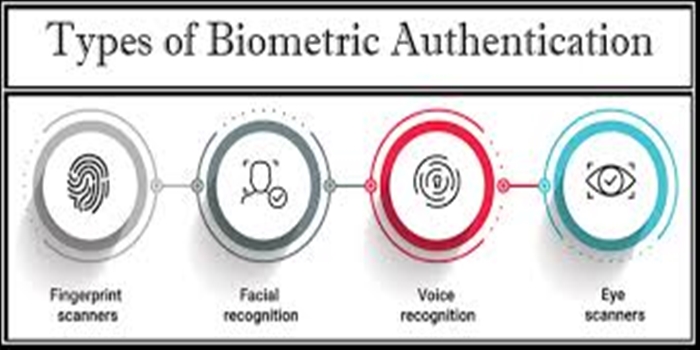In this article, we discussed the meaning of biometric authentication, examples, we also talked about the advantages and disadvantages
Definition
Biometric Authentication is a cybersecurity process that uses a person’s unique biological characteristics to verify their identity. this systems store this information and use it to verify the user’s identity when they access their account.
Biometric authentication refers to a cybersecurity process that verifies a user’s identity using their unique biological traits such as fingerprints, voices, retinas, and facial features. this systems store this information in order to verify a user’s identity when that user accesses their account.
Some examples of biometric authentication include:
Fingerprint recognition
Analyzes the ridges and patterns of a person’s fingerprint to verify their identity. Fingerprint recognition is one of the most common types that is widely used in smartphones.
Facial recognition
Analyzes a person’s facial features, such as the shape of their nose, the distance between their eyes, and their jawline, to verify their identity. Facial recognition is often used on smartphones and online services.
Iris recognition
Scans the unique patterns in the iris of a person’s eye to verify their identity. Iris recognition is considered one of the most accurate types of biometric identification.
Voice recognition
Compares a sample of a person’s voice, known as a voiceprint, to a sample on file. Voiceprints are unique to each person and remain the same throughout their life.
Behavioral biometrics
Analyzes a person’s physical and cognitive behavior, such as typing rhythm, mouse movement, or touchscreen use, to verify their identity.
Types of Biometric Authentication
Types of biometric authentication
Facial recognition
Voice recognition
Iris recognition
Palm or finger vein patterns
Biometric authentication has many advantages and disadvantages, including:
Advantages
Better user experience: This is more convenient and intuitive than traditional methods, and users don’t have to worry about forgotten passwords.
Less reliance on passwords: Biometrics can reduce the need for passwords, which are often compromised by cybercriminals.
Phishing-resistant: Biometrics are more resistant to phishing attacks than passwords.
Reduced operational costs: Businesses can save money by reducing their reliance on traditional authentication methods.
Disadvantages
Privacy concerns: it involves collecting and storing personal data, which can raise privacy concerns if the information is mishandled.
False positives and false negatives: Biometric systems can make errors, such as incorrectly identifying someone or failing to recognize a legitimate user.
Vulnerabilities in biometric authentication software: Biometric authentication details cannot be invalidated remotely if something goes wrong.
High implementation costs: Biometric authentication can be expensive to implement.
Ethical concerns: Some people may have ethical concerns about biometric authentication.
Spoofing risks: Biometric traits can be difficult to replicate, but they are not immune to spoofing attacks.
Conclusion.
Biometric authentication is an effective way to secure digital devices and data. It provides a higher level of security and convenience than traditional authentication methods. However, it also has its disadvantages, such as privacy concerns, false positives, and high costs.


